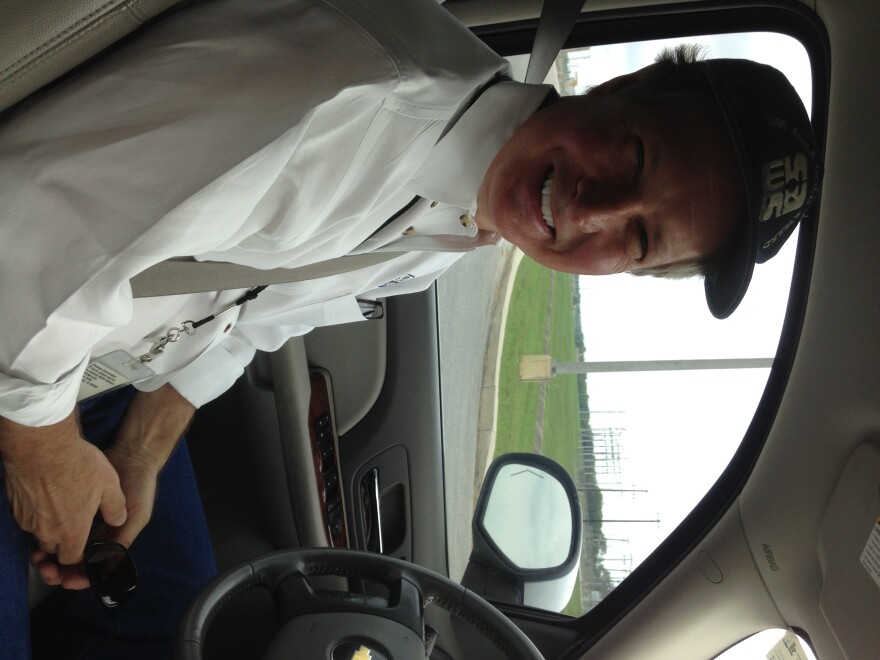A sewage water recycling center that smells good? One that doesn’t use chemicals? Dos Rios Water Recycling Center is the largest of San Antonio Water System’s recycling centers. The plant treats about 80 million gallons of sewage water a day using biological processes that attract unwanted pests. The solution has involved using nature to control nature.

Greg Eckhardt is a senior analyst with the San Antonio Water System, or SAWS. According to him, everything that happens at Dos Rios Water Recycling Center is natural. That includes the aeration basins that are about 40 feet deep. When you flush your toilet this is where it ends up.
"And at the bottom there are about 5,000 of these diffusers. They look just like a stoned-in aquarium. They make fine bubbles. And the reason we’re pumping all this air into these basins is to keep organisms alive so they can consume the organic material that’s in the water. That’s basically how the treatment process works. It’s biologic. We’re using bacteria and organisms to consume the organic material that you flushed," Eckhardt says.
And what you flush eventually gets turned into compost.
Down the road from the basins, there are 132 drying beds that are used to remove the liquid from the sludge before it’s turned into compost. The beds basically look like large empty garden plots. And, definitely surprisingly, considering where this compost came from, they smell great. Lilliana Gonzalez is a communications specialist with SAWS.
"It’s a very earthy smell. I always describe it as right before it rains, or a wet earth smell. That just means that it’s gone through the right biological process," Gonzalez says.
Doing things naturally is all fine and good, but it tends to invite unwanted guests. Like those that feast on an organic garden not treated with pesticides.
Gonzalez says Tad Eaton is the plant manager who helped solve that little problem.
"With the sludge, sometimes comes insects- the flies. This is where Tad helped us design an integrated pest management system so we wouldn’t have to use—really we wouldn’t have to depend on chemical fumigation, and so that would instead use sort of more natural processes to keep the pest population under control," Gonzalez says.

Gonzalez says before they started the integrated pest management system, neighbors were complaining about the insects. So SAWS brought in purple martins. The males are a shiny purple-blue, and the females are…brown. They’ll almost do flips in the air to catch the flies. Scattered around the recycling plant, there are groups of little wooden houses sitting high up on poles for the birds. The purple martins eat the flies. But the natural pest control doesn’t stop there.
"We have parasitic wasps and those help control the flies. So the birds are eating the adults, and the parasitic wasps are injecting their larvae into fly pupae, so that when they are born basically what comes out is the wasp, but not the fly," Gonzalez says.
These wasps stay by the recycling plant, so they aren’t a nuisance to the neighbors. And they’re so tiny that they’re barely noticeable. Eaton has some in a Ziploc bag. They’re about the size of fruit flies.
Gonzalez says integrate pest management is layer upon layer upon layer of using nature to control the pests.
"There is a chemical that is sprayed, but it’s a naturally occurring bacteria in the soil. When the fly larvae consume it, it crystallizes in their stomach, and so it actually kills them. And then there’s a barrier that’s sprayed, but that’s actually rosemary and tea tree oil," Gonzalez says.
And Gonzalez says the system has really worked. The neighbors don’t complain about the flies anymore. And the purple martins and tiny wasps- they’re happy…and well-fed too.



